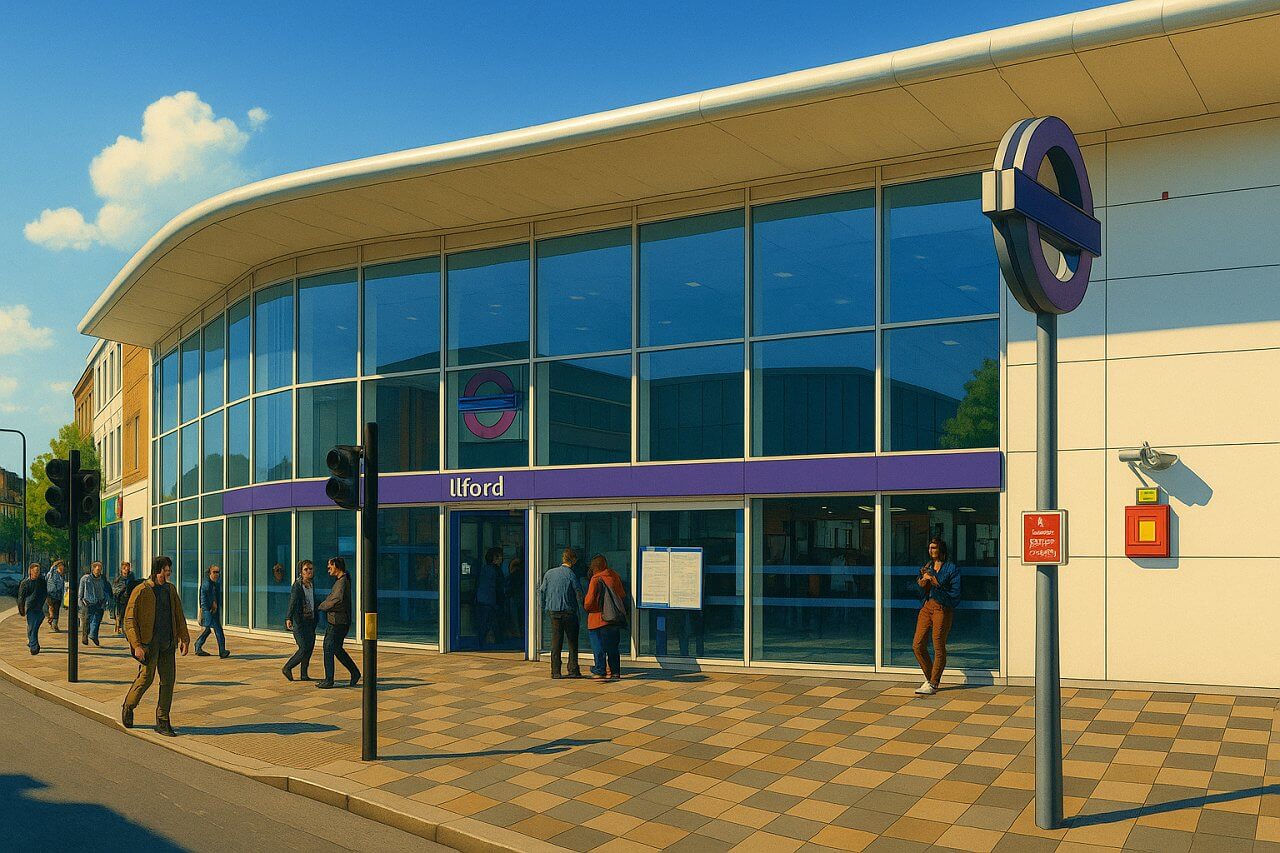
Ilford Station, London
Ilford Station is a significant transport hub located in the heart of the London Borough of Redbridge. Serving as an important stop on the Elizabeth Line, it offers fast and direct access to central London and beyond. Although not part of the deep-level London Underground network, it is still commonly grouped with other London Underground Stations for practical travel purposes.
History and Naming
Ilford Station originally opened in 1839 as part of the Great Eastern Main Line by the Eastern Counties Railway. It has kept the name "Ilford" since its inception, derived from the ancient parish of Ilford, which itself comes from "Ilefort", believed to mean "ford over the River Hyle"—an old name for the River Roding.
The station has undergone several redevelopments, most notably as part of the Crossrail (now Elizabeth Line) project, which modernised the platforms, installed new lifts for step-free access, and gave the station a redesigned and more spacious concourse area.
Station Layout and Access Points
Ilford Station’s main entrance is situated on Cranbrook Road (A123), a major thoroughfare through the town. The station building is at ground level and features a modern facade. In addition to ticket barriers and waiting areas, the station includes retail outlets such as a coffee shop and newsagent. A secondary entrance/exit is available on York Road, primarily for pedestrian use and access to nearby bus stops.
Distance from Charing Cross
Ilford is approximately 9.5 miles (15.3 km) east of Charing Cross by road, depending on the specific route taken. Driving typically takes around 35–50 minutes, subject to traffic conditions.
Rail Services
Ilford Station is served exclusively by the Elizabeth Line, which connects East and West London via key interchanges. There are no London Underground lines directly at Ilford Station, nor is it served by Overground or National Rail-branded services, although the Elizabeth Line operates over former National Rail tracks.
Elizabeth Line Services
Ilford lies in Travelcard Zone 4. On the Elizabeth Line:
- The preceding station to the west is Seven Kings.
- The next station to the east is Manor Park.
From Ilford, passengers can travel westbound through major interchange stations such as Stratford, Liverpool Street, Farringdon, and Paddington, or head eastward towards Shenfield.
Travelcard Zones and Fares
Ilford Station is in Zone 4.
Fares and Travel Times
- To Reading Station: Approx. 1 hour 20 minutes.
Adult fare: £22.70 (paper single), £14.00 (Oyster/contactless, peak). - To Abbey Wood Station: Approx. 35 minutes.
Adult fare: £7.60 (paper single), £4.40 (Oyster/contactless, peak). - To Charing Cross Station: Requires interchanging.
Suggested route: Elizabeth Line to Tottenham Court Road → change to Northern Line southbound.
Estimated travel time: 40–45 minutes.
Adult fare: £6.70 (paper single), £4.30 (Oyster/contactless, peak).
Fun Fact
Ilford Station was once the location of an experimental train control system in the 1940s, designed to test early automatic train stop technologies. Additionally, the station appeared in early promotional materials for British Rail as an example of suburban railway success.
Quick Facts
- Location: Cranbrook Road, Ilford, London Borough of Redbridge
- Opened: 1839
- Line Served: Elizabeth Line
- Fare Zone: Zone 4
- Main Entrance: Cranbrook Road; secondary access on York Road
- Previous Station: Seven Kings
- Next Station: Manor Park
- Distance from Charing Cross: ~9.5 miles (15.3 km) by road
- Facilities: Retail outlets, ticket machines, step-free access
- Fun Fact: Site of early train stop automation trials in the 1940s
Ilford Station is  on the Map of London Underground
on the Map of London Underground

Painting of Ilford Station, London (View image in full size)